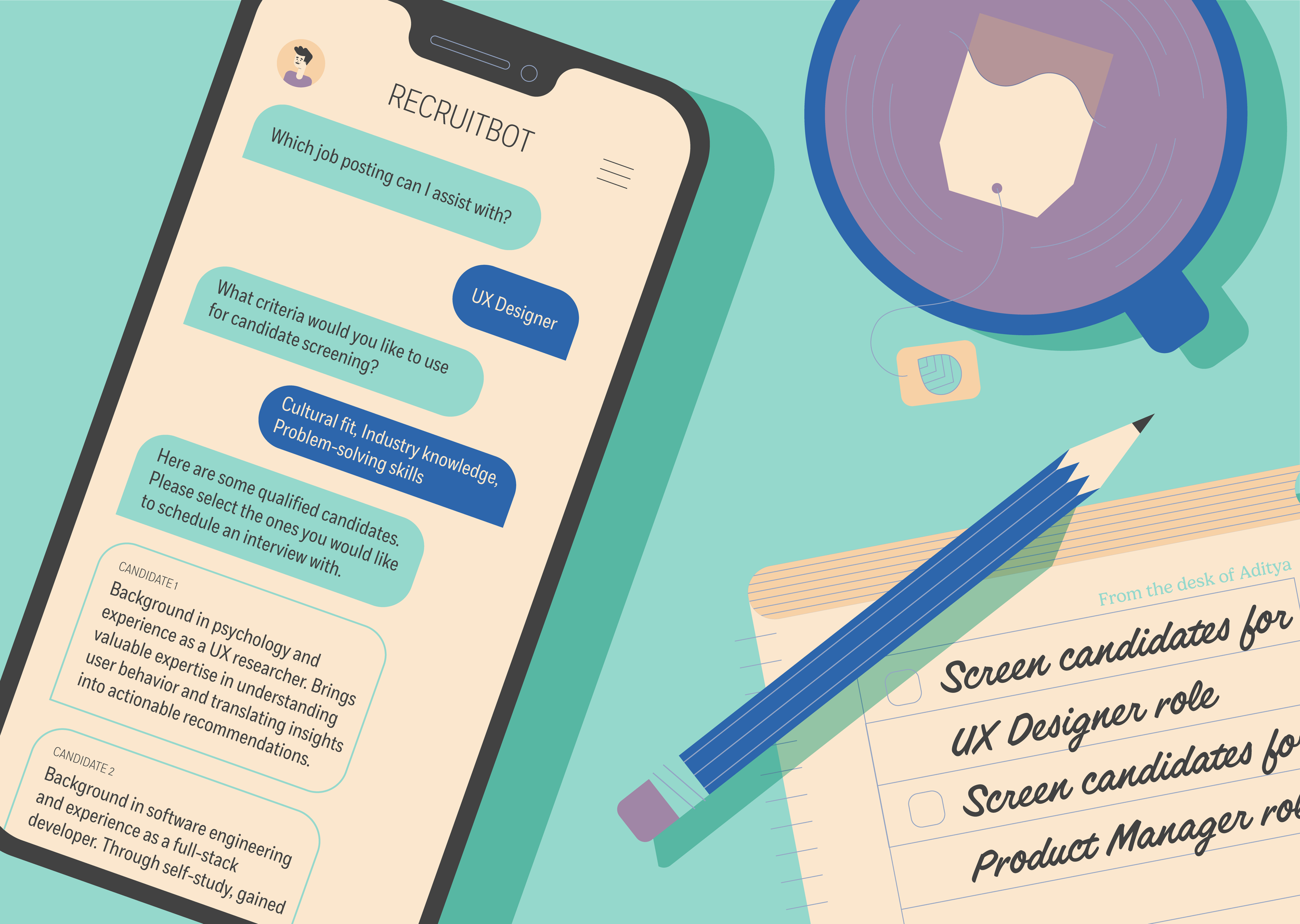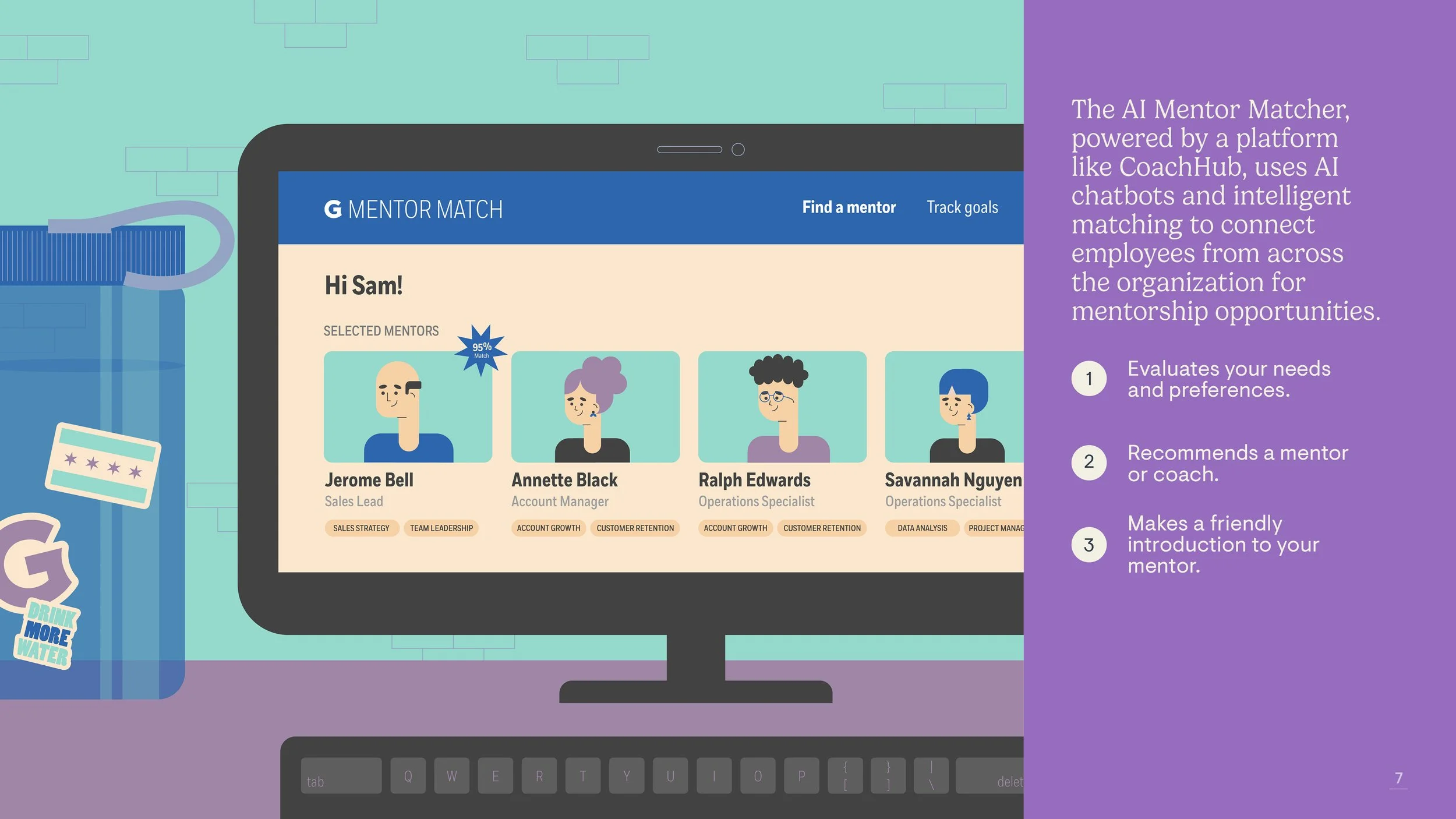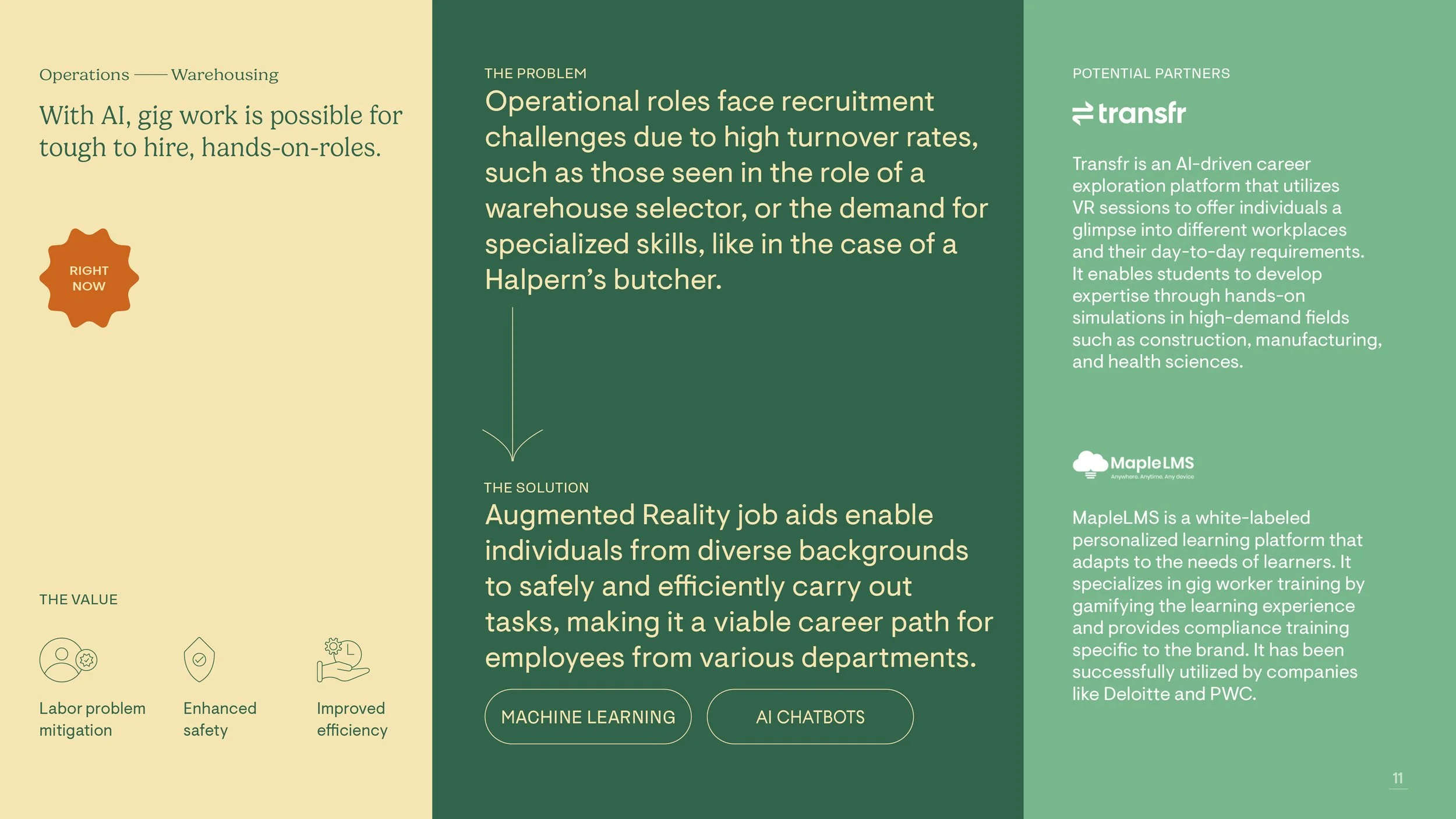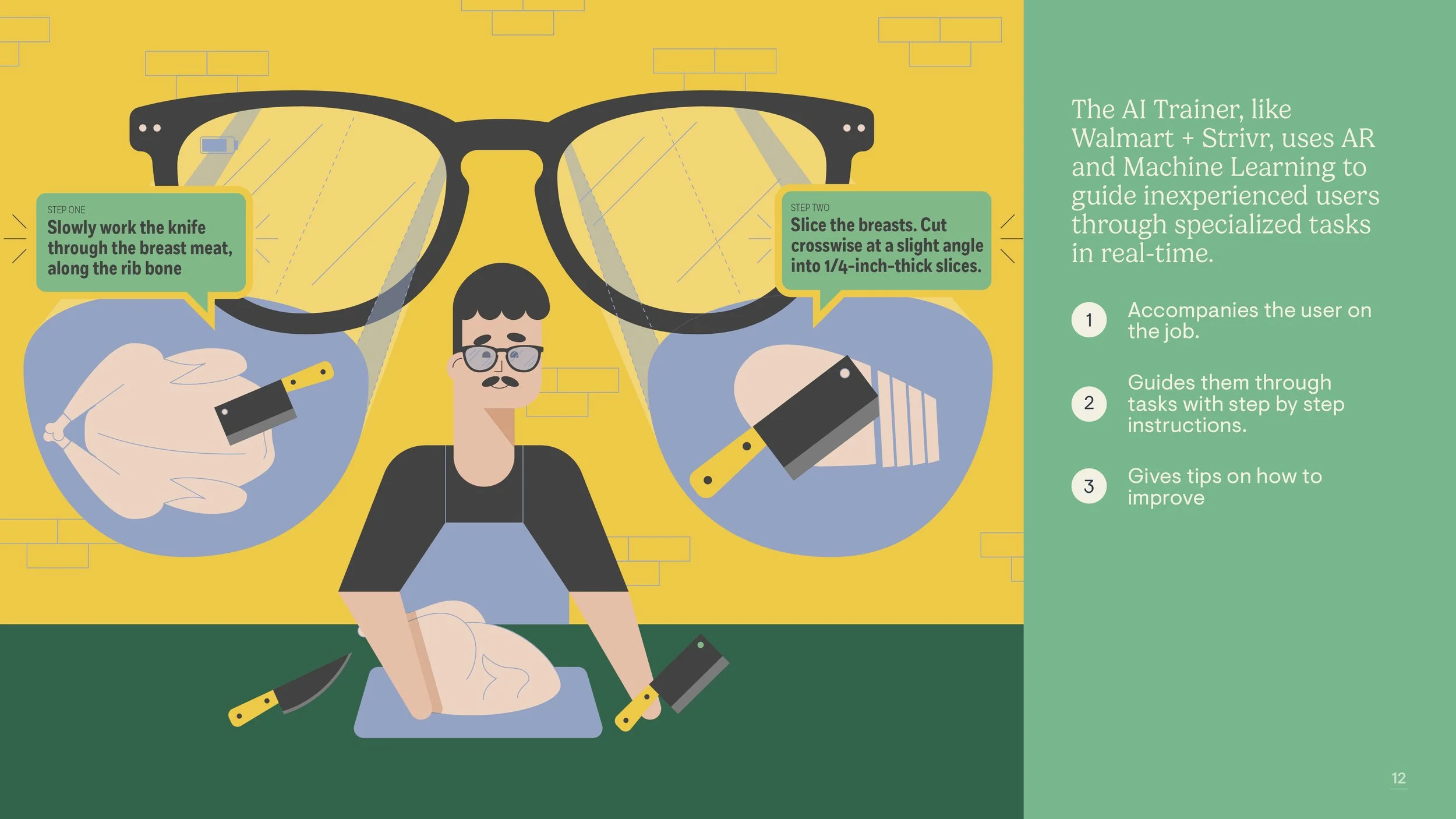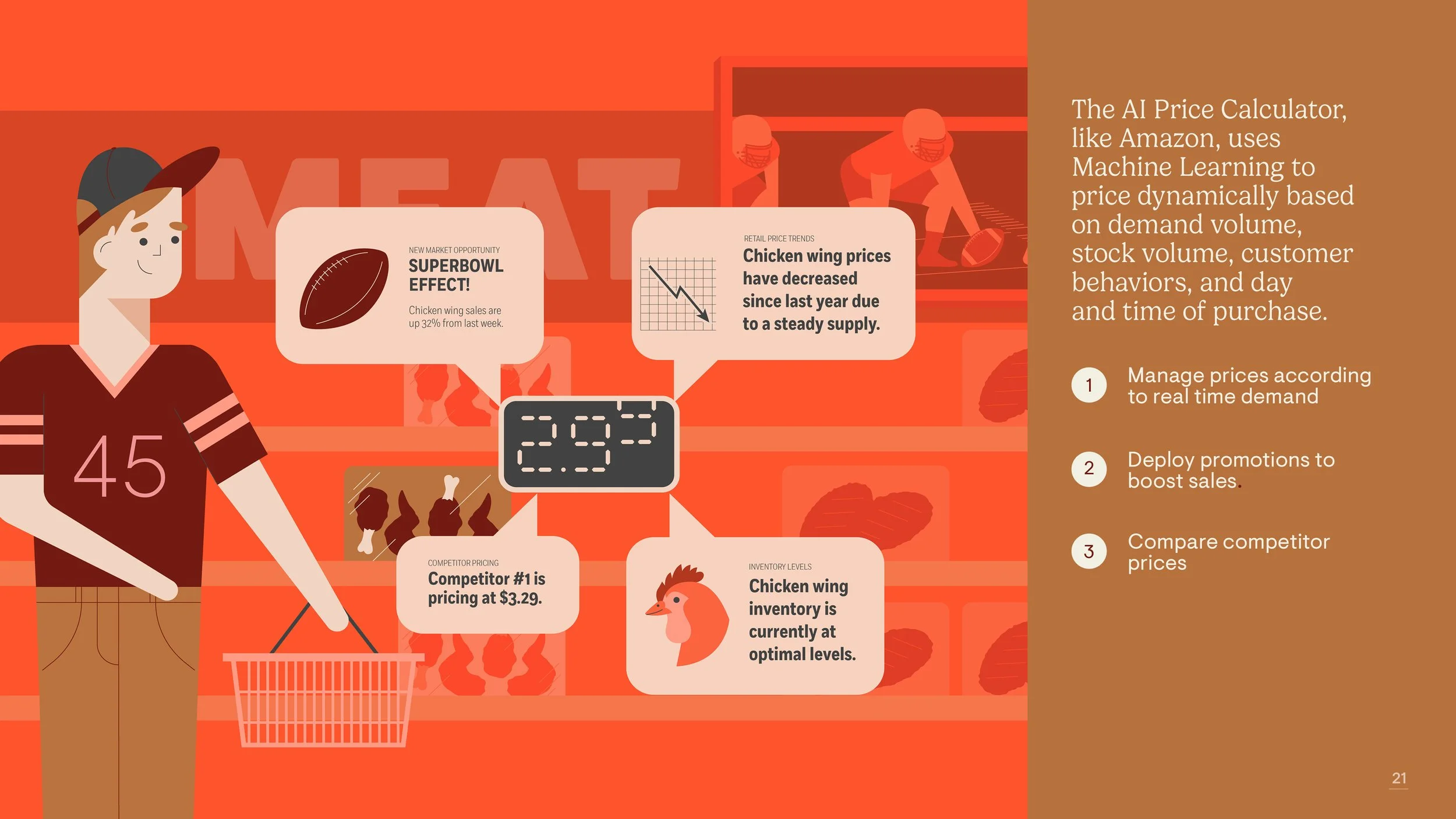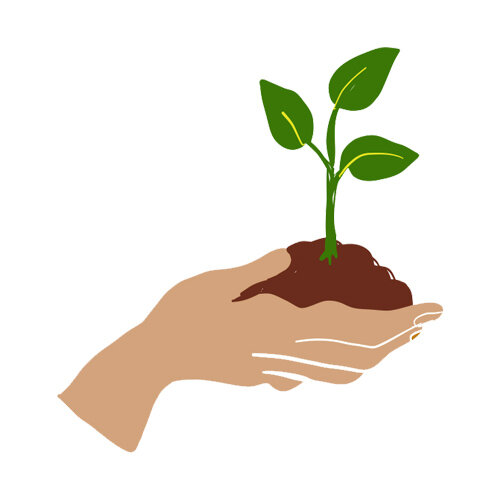Imagining how AI will disrupt the
food industry
Keywords: Futures work, Emerging technology, Design research
Tools: Miro, Adobe Indesign, Adobe Illustrator
Team: Mara Russo, Nathalie Cacheaux, Janna Mazur
Role: Design researcher, Illustrator, Art director
BACKGROUND
In the last year, the general public’s interest in AI has skyrocketed, with Google Trends showing a 300% increase in search volume for the keyword “AI”. This interest is driven by the release of consumer-facing AI tools like MidJourney and ChatGPT.
But AI is more than a buzzword, it has the potential to transform the way we live, work, and everything in between.
This feels like the right time to ask— what kind of future do we want to create with AI? What values do we want our AI-led futures to have? Why?
THE CHALLENGE
Imagine the way AI technologies will disrupt the food distribution industry in the mid-near future.
Select Scenarios
For hiring
Today, the recruiting process is tedious, time-consuming, and speed-to-hire is low. With an AI-powered chatbot, hiring managers screen candidates, schedule interviews, and answer candidate FAQs quickly and more efficiently.
As certain roles become hard to hire for, can AI and AR/VR, help gigify these roles?
Can AI help us price things dynamically?
Appendix
-
Secondary research from online newspapers, blogs, and industry publications, was supplemented by interviewing 2 industry experts.
Existing solutions and ideas were considered and
-
Description text goes here
-
Description text goes here
Encouraging design language
The job search process is only partly about the logistics. An overlooked component is navigating the emotional upheaval. We chose a design language that was friendly and warm.
Break down processes into simple tasks
Finding a job can be overwhelming. Complex processes were divided into simple tasks- like finding references in one’s network or making a resume.
Visualize progress
This process requires patience and is often non-linear, so it was necessary to help visualise progress by recording each candidate’s applications, interviews, and callbacks.
High-Fidelity Prototypes
Discover alternate industries where your existing skills can be transferred
Stay informed about industry prospects
Reflection
The process taught me the importance of designing with our users instead of for them. At the outset, we wanted to build an algorithm linked to a content aggregator that would reduce the staggering number of jobs available. After talking to the users, we understood how severely one's well-being is affected, which led us to make significant changes.
We would have tested with more individuals and iterated on our current prototype if we had more time. We would have also liked to collaborate with NGOs working in this field to do a test run.


